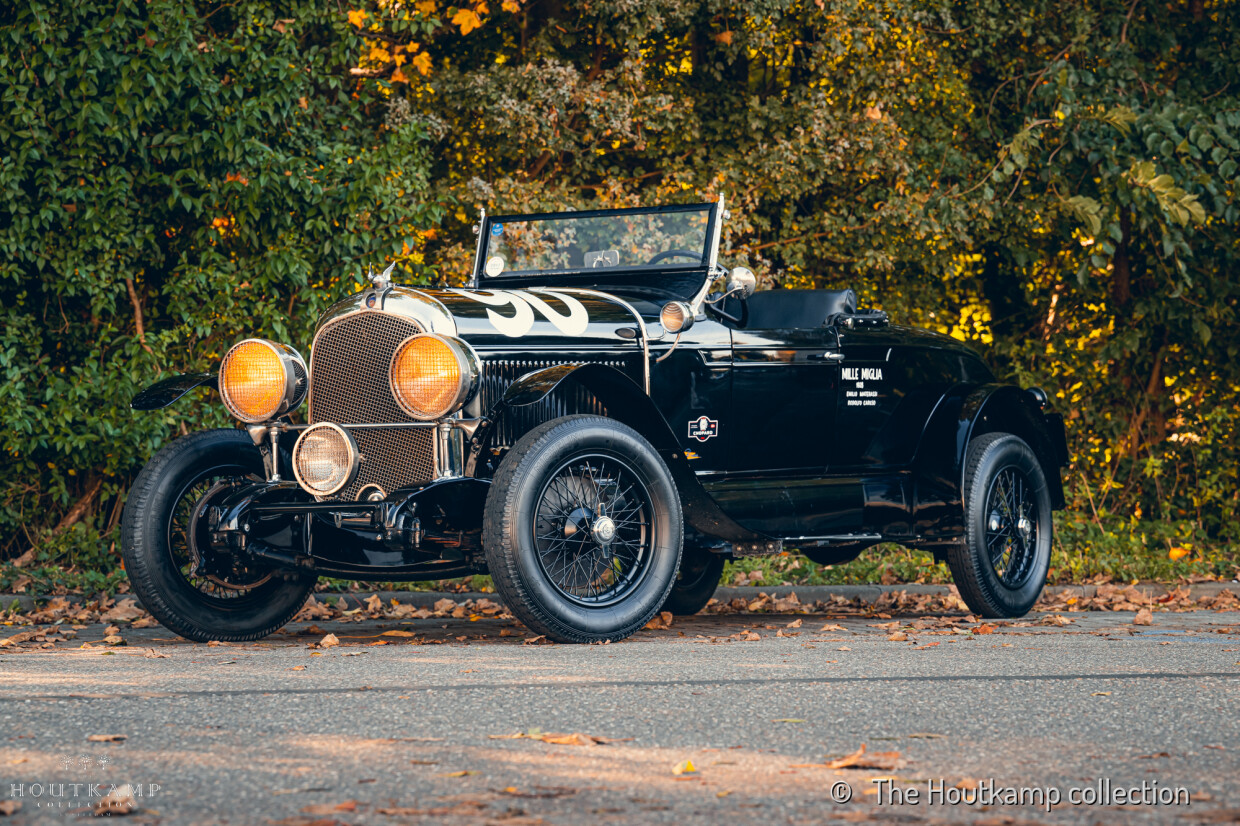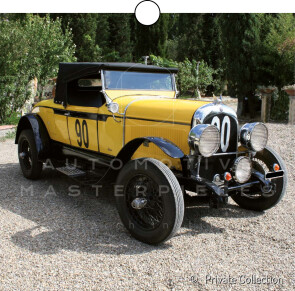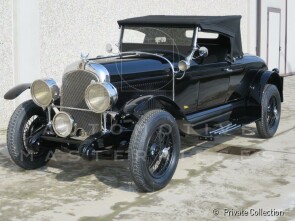
1928 Chrysler 72
ON/OFF
Why am I an Automotive Masterpiece?
H. Works cars
Agenzia Generale Italiana Chrysler (I)
Chrysler was still a relatively "new" Company in 1928, having been founded by Walter P Chrysler in 1925. Thanks to the 4 litre L head, seven main bearing inline six cylinder engine developed for the mid-size B70 model, Chrysler was able to rose to prominence quickly, rising from 32nd to 3rd place in the sales charts. Thanks to the use of high-compression cylinder heads and cast aluminum pistons, Chrysler engines were able to achieve superior performance despite being a lower displacement than the competitors. In particular, the early roadster models gained a reputation for being some of the fastest and sporting cars available in their class and became the ideal choice for gentlemen drivers in both United States and Europe, as well. Being a man with a forward-thinking mind and a remarkable sense for marketing, Walter Chrysler believed in the advertisement power of motor racing. In particular, the “70 series” models competed in many events and, quite unusually for an American Brand, they achieved quite a remarkable success in Europe. Introduced in 1928 as the evolution of the Model 70, the 72 featured a 75 hp 3.582cc side-valve inline six cylinder engine, special Chrysler-Lockheed patented self-adjusting drum brakes and a three speed gearbox. Being a man who truly believed in marketing Walter P. Chrysler saw motor-racing as a very important activity to promote his cars and therefore he entered some of the major competitions in both US and Europe. In particular, during these years, Chrysler counted on the Italian American driver Ralph de Palma, whose skill brought much success in the racing fields all across the globe. In 1928, two factory entered and slightly modified Model 72s were driven to 3rd and 4th overall at the 24 Hours of Le Mans and they were only beaten by the Bentley 4 ½ l of Barnato/Rubin and by the Stutz DV16 of Brission/Bloch, first and second place. Both Chryslers placed before Bentley legend Tim Birkin, a result of a testament of both the superior reliability and performance of the Model 72. The image of Chrysler benefited, since the cars entered were close to stock and were able to compete with much more expensive and exclusive machinery. Again in 1928, Chrysler entered 4 cars in the Mille Miglia with the following drivers and co-drivers: Emilio Materassi - Rodolfo Caruso, Baronessa Maria Antonietta Avanzo – Barone Manuel De Teflè, Count Gioacchino Leonardi – Guido Cariaci, Lodolini – Ruggeri. Of these, the Model 72's of Leonardi-Cariaci and Lodilini-Ruggeri ranked respectively 2nd and 3rd in class, while the other two cars withdrew from the race.
Chassis CP982D is one of the four works cars enrolled to the Mille Miglia in 1928 and it was driven by Emilio Materassi and Rodolfo Caruso. Materassi was one of the most prominent drivers of the time and his fame and skill behind the wheel made him one of the best drivers of his time, Rodolfo Caruso was the nephew of the famous tenor Enrico Caruso. Despite the promising performance, the car didn't make to Rome and withdrew from the race. Subsequently, it was entered in the Circuito di Caserta and raced with considerable success.






